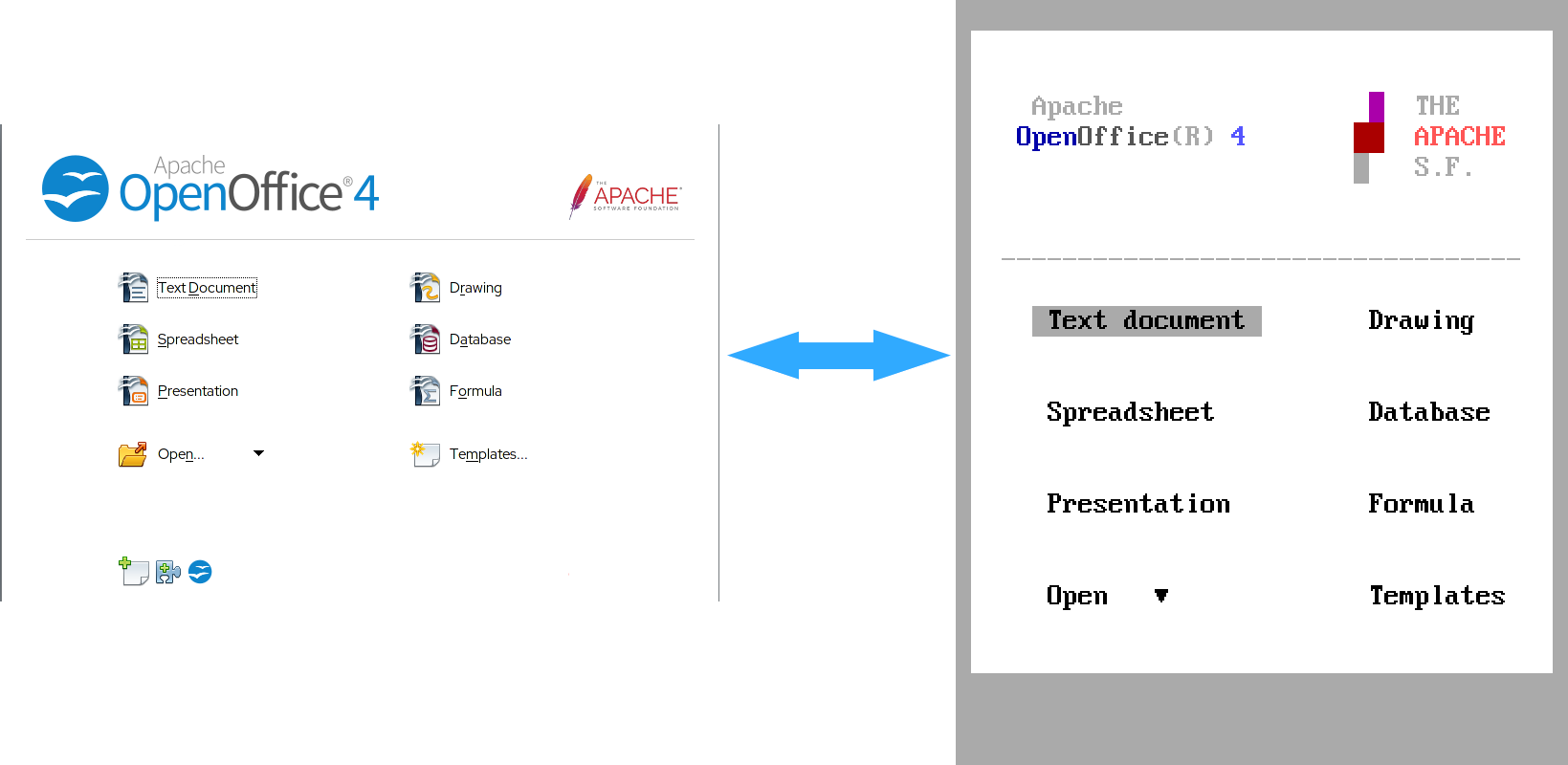The Apache OpenOffice Development Team is proud to announce that the next releases will introduce an important change: a text-only user interface.
We all know that today's applications are shifting from local systems (desktops, workstations etc.) to the cloud and to browser-centric user interfaces. This process does not always increase the overall usability: web browsers and related technologies (HTML, Javascript, etc.) still cannot achieve the performances of stand-alone applications written in C++ or Java, and different browsers often introduce quirks and small problems that developers are chasing every day.
Apache OpenOffice is stepping ahead of this process, offering an user interface that is actually simpler, and will surely work smoothly on any computer.

The Splash Screen
Linux users are already accustomed to terminal emulators, and connections to other computers using protocols such as Secure Shell (SSH) or even Telnet in the old days.
Microsoft Windows user will recognize a somewhat familiar look of the new interface, that will resemble legacy DOS programs such as WordStar.
The new user interface will be unable to represent bigger and smaller fonts, images, and will have a very limited support of colors (currently 16). It will abandon the outdated WYSIWYG paradigm (What You See Is What You Get) and will introduce the new WYSIWYG-WABIT (What You See Is What You Get -- With A BIT of imagination).

The Writer Interface
As this interface will be based on the latest versions of the available software libraries, the next releases of Apache OpenOffice will unfortunately not support the following architectures:
- Linux x86,
- Windows 32-bit,
but the following architectures will be supported instead:
- MS-DOS 6.22 on dual-core ARM CPU's,
- Windows 3.11 (only on 64-bit systems),
- OS/2 on PowerPC.
The proposed release date is April 31st, 2024[1]. More screenshots will be available soon.
Stay tuned for more updates!
1: Please note that the US, European Union and many other countries have agreed to set a one-time leap day. This is to compensate a glitch in the timing that has been evolved over the past years.
